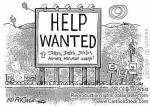Hello again.
I’ve mentioned before the book The Grapes of Wrath written by John Steinbeck, published in 1939. I really wanted to include this book in discussion because it is just one, fine example in a world of many, that illustrates the social issues we are studying in this project. If you fancy reading in your free time, it is a book I would highly recommend, not just because of the social studies within it, but also because Steinbeck is a beautiful writer.
Right now, I’m reading the book’s introduction, and it starts out with three quotes by the author:
“My whole work drive has been aimed at making people understand each other…”-1938
“Bolieau said that Kings, Gods, and Heroes only were fit subjects for literature. The writer can only write about what he admires. Present day kings aren’t very inspiring, the gods are on vacation, and about the only heroes left are the scientists and the poor…And since our race admires gallantry, the writer will deal with it where he finds it. He finds it in the struggling poor now.” -1939
“If i could do this book properly it would be one of the really fine books and a truly American book. But I am assailed with my own ignorance and inability. I’ll just have to work from a background of these. Honesty. If I can keep an honesty it is all I can expect of my poor brain…”
What Steinbeck didn’t know at the time, was that this book went on to become one of the top bestsellers, won several awards such as the 1940 Pulitzer Prize, helped Steinbeck achieve the Nobel Prize in 1962, and in a 1999 Writer’s Digest survey, aided in ranking John Steinbeck as the number one American writer of the century.
That being said, I want you to think about the power of voice. It is hard sometimes to believe that in a world as populated and diverse as ours, that individual voices are heard, are listened to. Speaking up takes courage, courage to believe that your voice will be heard, courage to believe that your voice has power, courage to stand up to those that will oppose your voice. Then there are all the different forms of voice to consider. Literature is one way to express voice, but there is also art, music, theater. How do these different forms of expression affect voice and how it is heard?
Think about the different voices centered around immigration today. What are they saying, what are their beliefs and opinions, and how do they affect you, at the individual level? How is this repeated through history?
Look back to the quotes I have included by Steinbeck. The first one expresses his desire for humans to understand each other. How do you get another person to relate to you, to see things, and more importantly understand them, from your own point of view. Why is this important?
The second quote is about inspiration and admiration. It also has a lot to do with reality. What inspires you, what moves you, what do you care about? How does this affect your reality-how you see the world? For Steinbeck, it was the human condition that moved him. It was hardship that produced compassion, that lead him to write one of the most important books in American history.
Today I will end with one of my favorite quotes of all time, written by conservationist Terry Tempest Williams:
“I have felt the pain that arises from a recognition of beauty, pain we hold when we remember what we are connected to and the delicacy of our relations. It is this tenderness born out of a connection to place that fuels my writing. Writing becomes an act of compassion toward life, the life we so often refuse to see because if we look too closely or feel too deeply, there may be no end to our suffering. But words empower us, move us beyond our suffering and set us free. This is the sorcery of Literature. We are healed by our stories.”
I want you to think about compassion. What is at the heart of our humanity? What separates us from our humanity? How can you apply this towards immigration/migration today?

Dust Bowl Refugees





